In the dynamic landscape of business, creating and communicating value to customers is paramount for success. The Value Proposition Canvas, a strategic tool developed by Alex Osterwalder and Yves Pigneur, serves as a powerful instrument for understanding, designing, and enhancing your value proposition. This article explores the key components of the Value Proposition Canvas and how businesses can leverage it to gain a competitive edge.
Part 1. What Is a Value Proposition Canvas?
The Value Proposition Canvas is a strategic management tool that is part of the Business Model Canvas framework. It was developed by Alex Osterwalder and Yves Pigneur, authors of the book "Business Model Generation." The canvas is designed to help businesses create and analyze their value propositions in a systematic way.
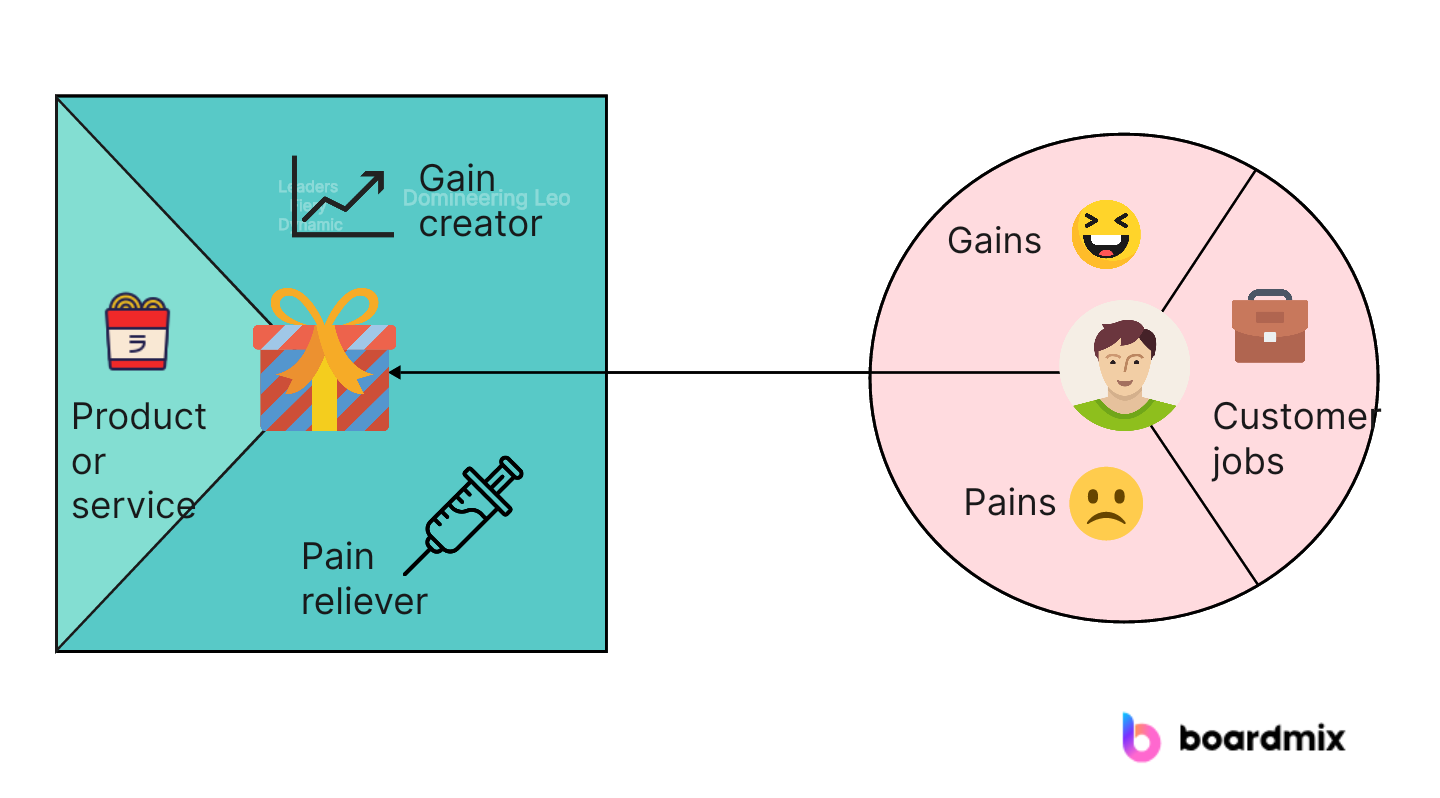
The Value Proposition Canvas consists of two main components:
Customer Profile:
Customer Jobs: The tasks or problems that customers are trying to accomplish.
Pains: The challenges, difficulties, and negative emotions associated with the customer's jobs.
Gains: The benefits, desires, and positive outcomes that customers seek.
Value Map:
Products and Services: The specific features and offerings that address customer jobs, pains, and gains.
Pain Relievers: How the products and services alleviate or eliminate customer pains.
Gain Creators: How the products and services provide benefits and create gains for the customers.
The Value Proposition Canvas is used by businesses to understand their customers better, identify opportunities for creating value, and align their products or services with customer needs. By filling out the canvas, organizations can visualize and refine their value proposition, ensuring that it resonates with the target audience and meets their expectations.
The canvas is often used in conjunction with the Business Model Canvas, which provides a broader view of the entire business model, including key components such as customer segments, channels, revenue streams, and cost structure.
Part 2. What Are the 6 Components of the Value Proposition Canvas?
The Value Proposition Canvas comprises six key components, divided into two main sections: the Customer Profile and the Value Map. Here are the six components:
Customer Profile:
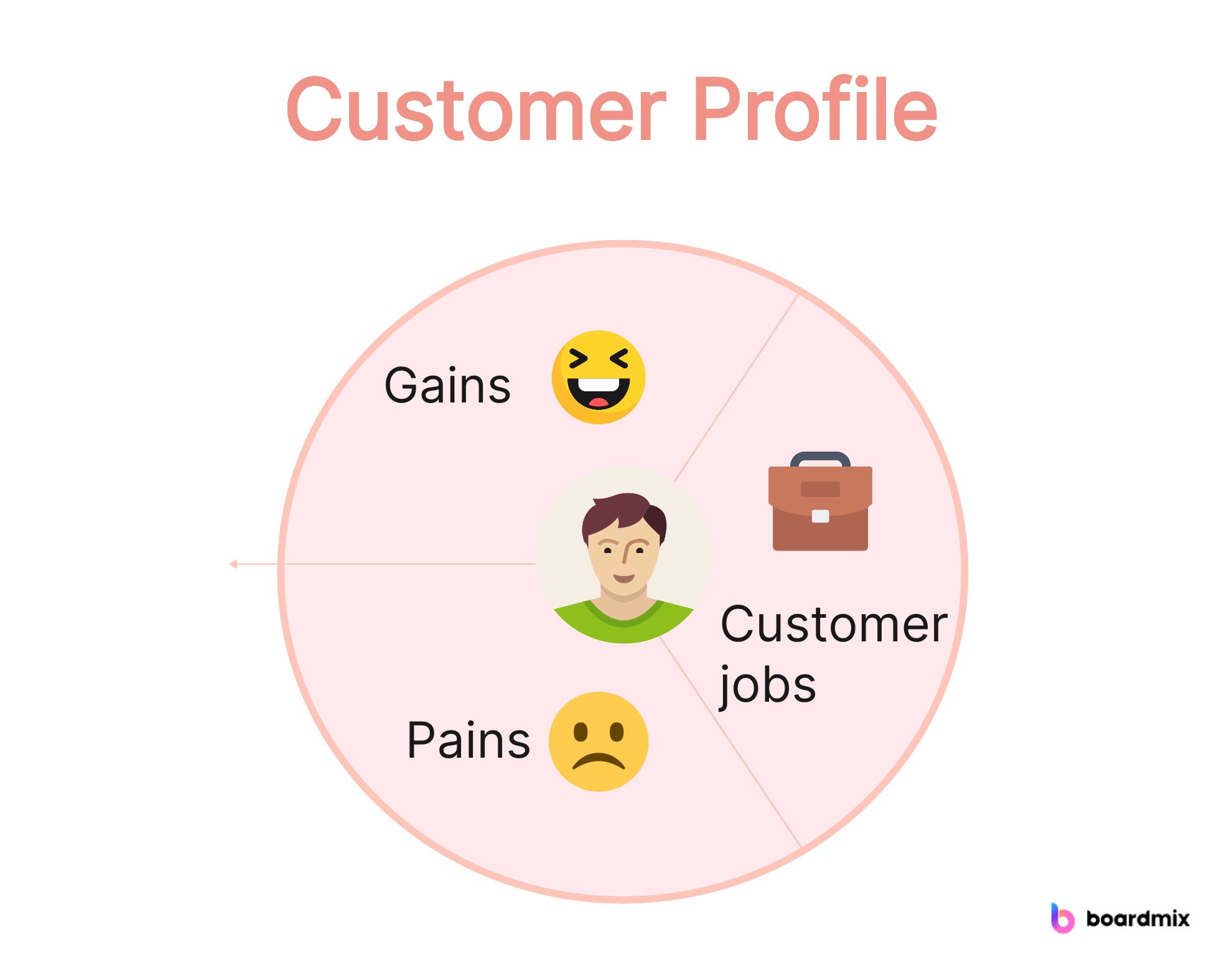
Customer Jobs:
This represents the tasks, responsibilities, or problems that customers are trying to address or solve.
Pains:
Pains describe the challenges, difficulties, and negative aspects that customers may encounter in trying to fulfill their jobs or tasks.
Gains:
Gains are the positive outcomes, benefits, and desires that customers seek to achieve while performing their jobs.
Value Map:
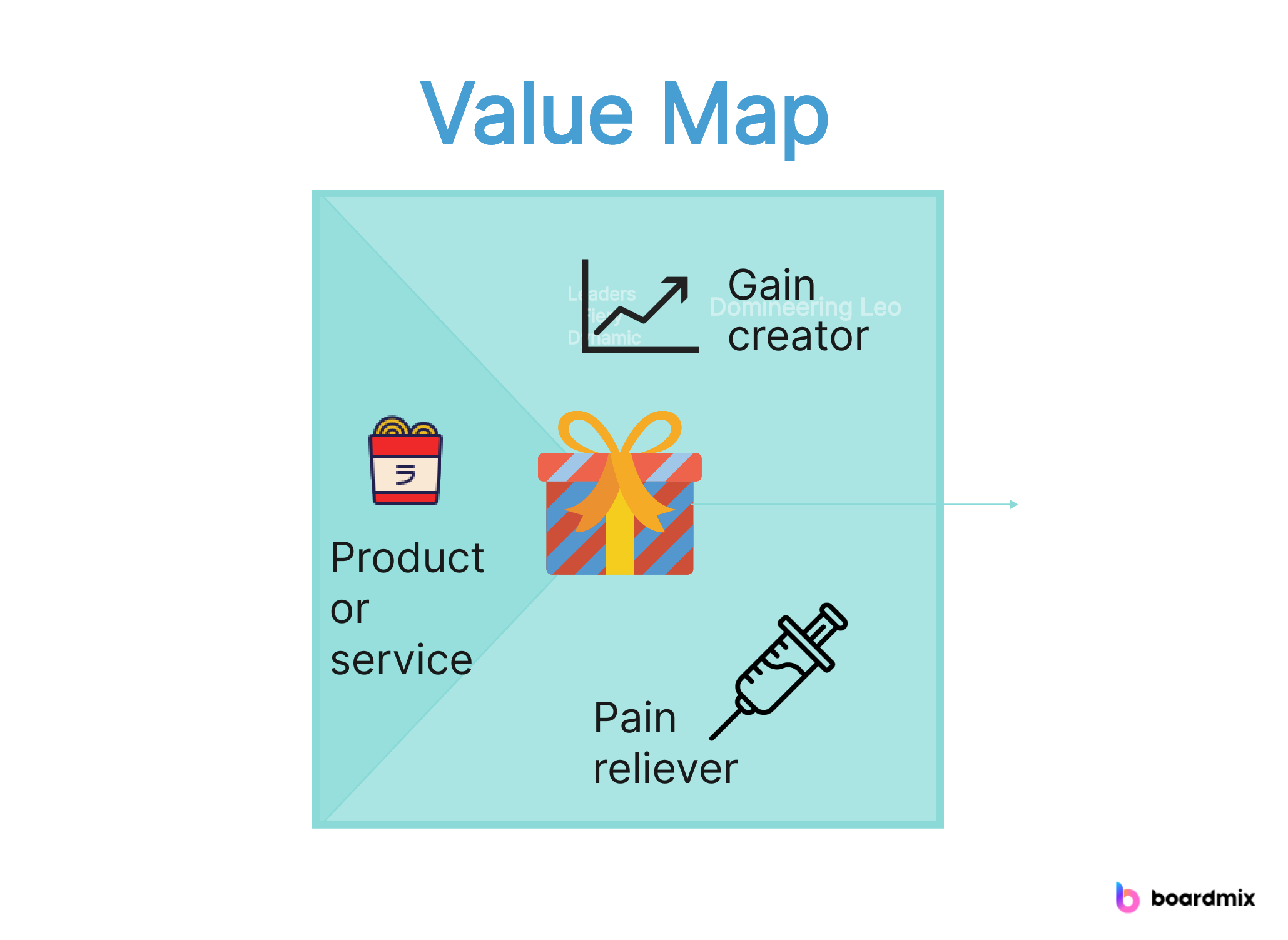
Products and Services:
This component outlines the specific offerings, features, or solutions that a business provides to address the customer's jobs, pains, and gains.
Pain Relievers:
Pain relievers articulate how the products or services alleviate or eliminate the pains identified in the Customer Profile.
Gain Creators:
Gain creators explain how the products or services create value for customers by delivering the gains they are seeking.
The Value Proposition Canvas serves as a visual tool to analyze and design the fit between what a business offers and what its customers need. By filling in these components, organizations can gain insights into customer needs and preferences, allowing them to fine-tune their value proposition for greater effectiveness in the market.
Part 3. How to Use the Value Proposition Canvas
Using the Value Proposition Canvas involves a structured approach to understanding and articulating the value your product or service provides to your customers. Here's a step-by-step guide on how to use the Value Proposition Canvas:
Customer Discovery:
- Engage in in-depth conversations with customers to uncover their needs, challenges, and aspirations.
- Use the Customer Profile section to document your understanding of customer jobs, pains, and gains.
Product/Service Design:
- Translate customer insights into concrete product or service features using the Value Map.
- Align pain relievers and gain creators with identified customer pains and gains.
Iterative Refinement:
- Continuously refine your value proposition based on customer feedback and market changes.
- Experiment with different combinations of features to optimize the fit between your offerings and customer needs.
This streamlined approach helps you quickly understand your customers, map your value proposition, and ensure a strong fit between what you offer and what your customers truly value. Remember that this is an iterative process, and continuous refinement based on feedback and market changes is crucial.
Part 4. What Are the Benefits and Limitations of Value Proposition Canvas?
Benefits of the Value Proposition Canvas:
Customer-Centric Focus: Helps businesses shift their focus to understanding and meeting customer needs, fostering a customer-centric approach.
Visual Representation: Provides a visual and structured framework, making it easier for teams to understand, communicate, and collaborate on value proposition development.
Alignment with Customer Segments: Ensures that products or services are designed to address specific customer segments, enhancing the relevance and effectiveness of the offerings.
Iterative Improvement: Supports an iterative process, allowing businesses to continuously refine and adapt their value proposition based on customer feedback and market changes.
Cross-Functional Collaboration: Encourages collaboration across different teams within an organization, such as marketing, product development, and sales, fostering a holistic approach.
Enhanced Communication: Facilitates clearer communication within the organization regarding the value the business aims to deliver to customers.
Risk Mitigation: Helps identify potential weaknesses or misalignments in the value proposition early in the development process, reducing the risk of launching products or services that may not resonate with customers.
Limitations of the Value Proposition Canvas:
Simplicity vs. Complexity: While the simplicity of the canvas is an advantage, it might be too basic for complex businesses or industries, requiring additional tools or frameworks for a more comprehensive analysis.
Static Representation: The canvas provides a snapshot at a specific point in time, and it may not capture the dynamic nature of customer needs or changing market conditions.
Assumption-Based: The canvas relies on assumptions about customer jobs, pains, and gains, which may not always align with real-world customer behavior. It's important to validate these assumptions through testing.
Overemphasis on Features: There's a risk of focusing too much on product features rather than deeply understanding the underlying motivations and emotions of customers.
Dependence on User Feedback: Success heavily depends on the quality and accuracy of user feedback. If the feedback is not representative or biased, it can lead to misguided decisions.
Not a Standalone Solution: While valuable, the Value Proposition Canvas is just one part of the larger Business Model Canvas framework. It should be used in conjunction with other tools for a more comprehensive business analysis.
May Oversimplify Customer Segments: The canvas may not capture the full complexity of diverse customer segments, and businesses may need additional segmentation tools for a more nuanced understanding.
In summary, while the Value Proposition Canvas is a valuable tool for understanding and refining a value proposition, it's essential to be aware of its limitations and use it in conjunction with other strategic management tools for a more holistic approach.
Part 5. When to Use the Value Proposition Canvas?
The Value Proposition Canvas is a versatile tool that can be used at various stages of a business's lifecycle and in different contexts. Here are some situations when you might consider using the Value Proposition Canvas:
New Product or Service Development: When launching a new product or service, use the canvas to ensure that you understand the needs and desires of your target customers and that your offering aligns with those needs.
Business Model Innovation: When exploring changes to your business model, the canvas can help you evaluate and adjust your value proposition to better suit evolving market conditions or customer preferences.
Market Expansion: When entering new markets or expanding your customer base, use the canvas to tailor your value proposition to the specific needs and characteristics of the new audience.
Strategic Planning: During strategic planning sessions, use the canvas to align your team on the key elements of your value proposition and ensure a unified understanding.
Customer Segmentation: When refining your customer segments, the canvas can help you understand the unique jobs, pains, and gains of each segment, allowing for more targeted marketing and product development.
Part 6. How to Build Value Proposition Canvas on Boardmix
Boardmix is a cutting-edge online whiteboard tool designed to revolutionize the way teams collaborate and visualize their ideas. With an array of drawing templates, Boardmix allows you to create, share, and edit your designs in real-time, fostering a seamless brainstorming process. Whether you're mapping out a new project plan, sketching wireframes, or building a value proposition canvas, Boardmix makes it easy. A value proposition canvas is a powerful tool that helps businesses understand their customers' needs and design products that meet those needs. With Boardmix's intuitive interface and robust features, creating a value proposition canvas becomes an engaging and productive exercise. It allows teams to visually map out customer profiles and value maps, leading to deeper insights into customer behavior and more targeted product development.

How to Build Value Proposition Canvas on Boardmix:
Open Boardmix: Start by opening your Boardmix application and creating a new board.

Choose Template: Select the Value Proposition Canvas template from our extensive library of templates.
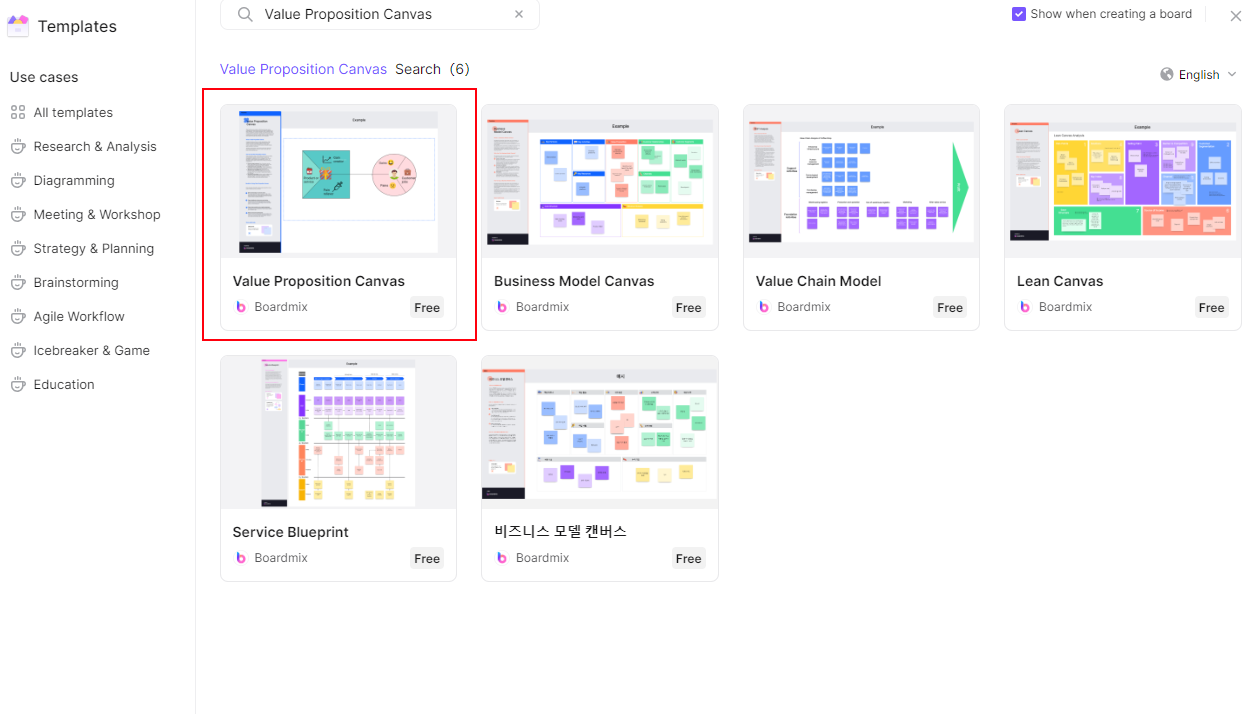
Fill in Customer Profile: The left side of the canvas is dedicated to the customer profile. Here, you should detail your customer segments, their needs, and what they value most.
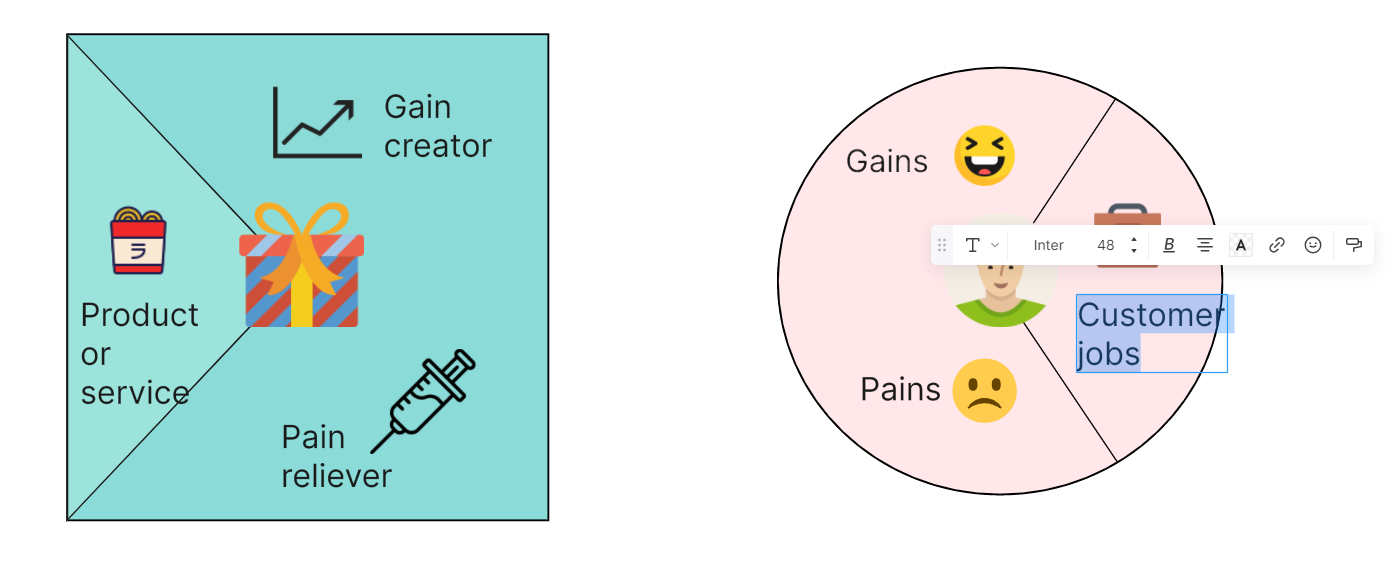
Detail Value Map: On the right side of the canvas, outline your product or service's features and how they meet your customers' needs.
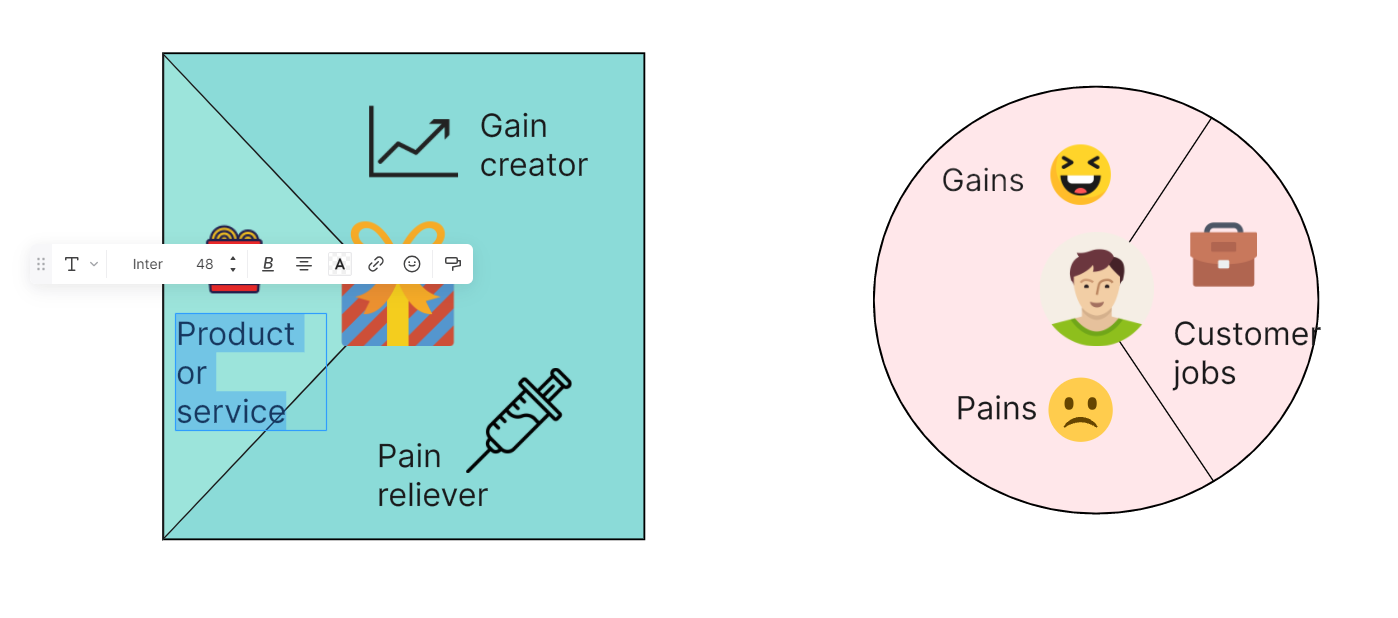
Connect Customer Profile and Value Map: Draw lines between related elements in the customer profile and value map to show how your product or service meets specific customer needs.
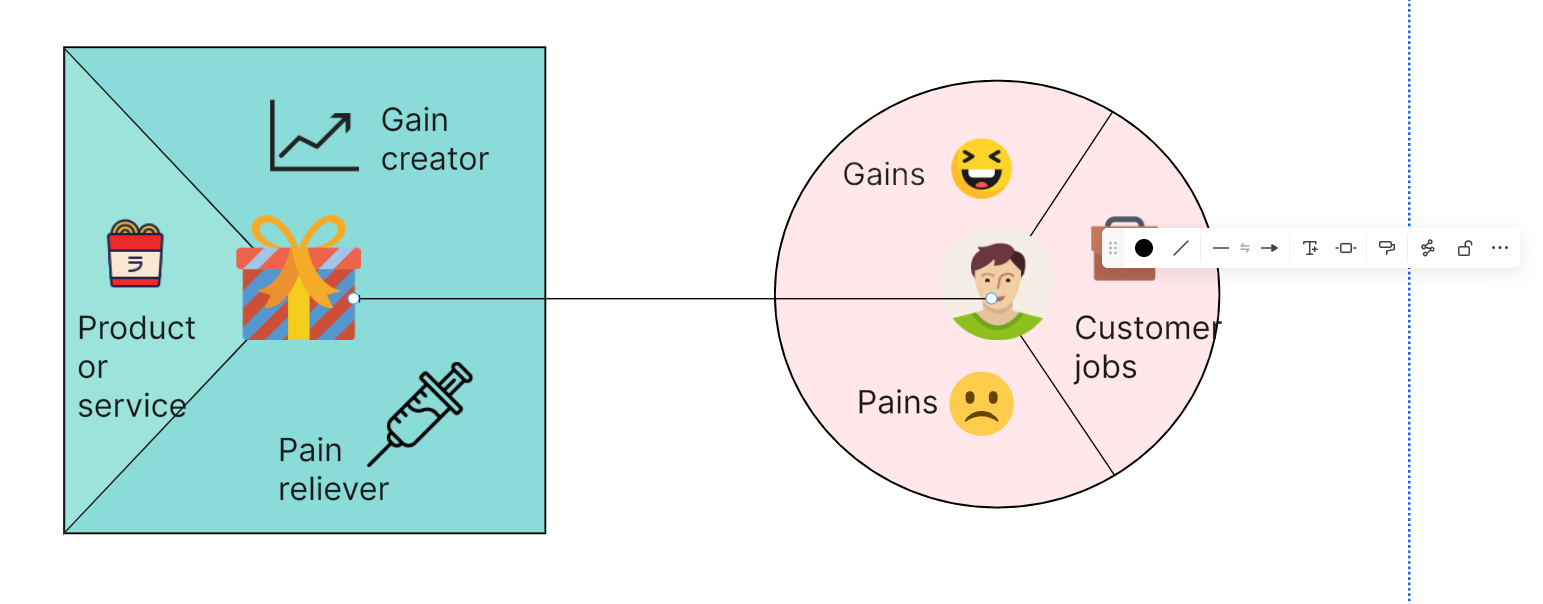
Collaborate with Your Team: Invite team members to join your board and contribute their ideas in real-time.

Conclusion
The Value Proposition Canvas is an invaluable tool for businesses seeking to create compelling value propositions that resonate with their customers. By fostering a deep understanding of customer needs and aligning products or services accordingly, companies can enhance customer satisfaction, drive innovation, and ultimately, achieve sustainable success in a competitive business environment. Embrace the power of the Value Proposition Canvas, and unlock the potential to revolutionize your approach to value creation.
Boardmix is the ultimate tool for creating value proposition canvases, providing an intuitive platform that fosters collaboration and creativity. With its extensive library of templates, real-time editing features, and seamless sharing capabilities, Boardmix makes it easier than ever to visualize your customer profiles and value maps. Start using Boardmix today to transform your brainstorming sessions into productive, engaging experiences that drive targeted product development.








